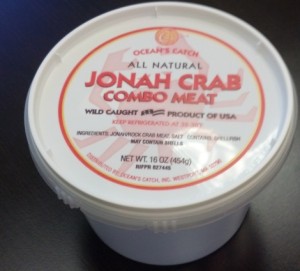One of the roles I inherited when I came to North Carolina is organizing the judges for annual home food preservation competition at the State Fair. The fair has a long history in scoring entries based on color, consistency, shapes and in some categories, taste.
According to the fair organizers we’re one of a handful of state fairs that allow judges to taste entries. It’s the part that has always made me nervous. I recruit the judges and it would be a tragic situation if someone got sick volunteering their time to evaluate canned goods. 
A couple of years ago, following a bot illness linked to watermelon jelly in British Columbia we decided to test the pH of some entries. Armed with blenders and pH meters my group opened a bunch of products and tested away. We found that a few exceeded 4.6 (the threshold that the NCHFP sets for safety in their recipes) and informed the competitors of the risks.
In subsequent years we increased the number of products we tested, and eliminated a category (sweet potato butter) due to safety concerns.
But the big turning point was the 2014 competition where we had a couple of judges taste a product that was supposed to be pickled, that wasn’t, and the pH was 6.1; a nice environment for bot toxin production.
It was a nervous week of waiting.
In consultation with the fair organizers, I decided to change the rules of the competition and require that competitors follow recipes in one of the three sources that have safety data behind them – the Ball Blue Book, So Easy to Preserve and the USDA guide to home canning.
It was a risk management decision. And it made some folks mad.
Jill Warren Lucas of Indy Week, a first time judge this year wrote a nice piece on her experiences and and the new rules,
Somewhere in my house, there is a photo of a much younger me, looking stunned to have won a red ribbon on my first try at the Indiana State Fair. I was bested only by my inspiration, the perennial winner Mrs. Imogene Orme.
Other hobbies have come and gone, but my obsessive passion for canning has stood the test of time. I’ve tested recipes for successful cookbooks and even published a few items of my own. And this year, I’ve met a new canning milestone: I served as a judge for home preservation entries at the North Carolina State Fair, which continues through Oct. 25.
I was the only newbie among 18 judges, some of whom have been participating for decades. After receiving directions from contest director Ben Chapman, associate professor and food safety extension specialist at North Carolina State University, we were sent off in pairs to pass judgment on blind entries in various categories.
During the next three hours, I tasted about 70 jams, jellies and juices. Even with small samplings, I soon approached a sugar-fueled state of delirium that my colleague expertly diagnosed as “jam drunk.” We both confessed relief when certain jars were determined to be outside of the scope of their category—for example, a lovely mashed-fruit jam erroneously entered as a whole-fruit preserve—and thus did not need to be sampled.
While a handful of entries were so exceptional we nominated them for Best of Show consideration, others were so mundane (or awful) that we actually presented no awards in a few categories.
The reason for this surprising lack of top-quality entries? Changing food safety standards.
Perhaps because I’m a careful canner, worrying about the safety of tasting entries never crossed my mind. But as Chapman soberly warned judges, concerns about just that led organizers to make controversial changes to this year’s contest.
According to Chapman, the North Carolina State Fair is one of only five across the country that tastes nearly all entries. The exception is low-acid foods, which, because of their inherent risk of instability, are judged on appearance only by a pair of food scientists, serving in this role for about 40 years. All other entries were first tested for safe pH levels and then brought to judges.
To further ensure our safety—and, more broadly, to foster standardized canning processes—all entrants had to cite one of three established sources as the basis of their recipe: the ubiquitous Ball Blue Book Guide to Preserving, USDA.gov guidelines or So Easy to Preserve, a publication of the University of Georgia’s National Center for Home Food Processing and Preservation. “We know that these documents have data behind the safety of their recipes,” Chapman explains.
Entrants also had to submit their entire recipe. Some longtime canners, like those who faithfully recreate recipes handed down through generations, balked at having to use a specified source. Many more took offense at having to provide their recipe. A few expressed anger at the lack of trust. Some feared that secret recipes would be revealed. While the updated rules were published in July, the backlash hit its peak in the weeks preceding the October 12th deadline to submit jars for judging. Organizers expected nearly 1,200 entries, but only received about 700.
Chapman says one irate individual, a longtime participant, even stated the intention to launch a boycott. University and fair officials have advised Chapman to not discuss specifics of what the individual said, but he confirmed that security issues became involved. There was even a brief scare at the fairgrounds when someone tried to enter the closed judging area, though it proved to be a false alarm.
Chapman spent much of his day comparing non-sourced entries to the three guides to determine if they were sufficiently similar to remain in contention. Most were found to have acceptable ratios of ingredients. If such vigilance seems like too much worry over canned fruit, remember 24 cases of botulism, including one death, have been reported in the U.S. this year.
“This happened last spring, right about the time we were talking about the rule changes,” Chapman says, adding there also was a troubling case in Ashe County. An experienced canner who ate spoiled carrots suffered severe symptoms for 11 days before her doctor identified the cause. “Botulism is the most toxic, naturally occurring substance we know of. It’s been used in terror attacks (not actually used but identified as a potential weapon -ben). One gram of botulism that is crystalized can kill a million people. It’s serious stuff.”
Previous tweaks to entry rules, likewise made in the name of food safety, also frustrated entrants. Chapman recalls “a similar uproar” a few years ago when participants were required to state how many minutes they processed any entry, an essential clue to knowing whether a jar’s contents had enough time to reach the temperature necessary to kill potential toxins. Unlike mold or other visible signs of spoilage, dangerous bacteria is not always so evident.
“We want to keep the tradition of tasting entries, but it’s my job to worry about this stuff,” Chapman says. “Most people understood the rationale. If some people decide that they can’t participate anymore, we’ll live with that.”
 To date, four Campylobacter and four E.coli O157:H7 cases have reported drinking raw milk produced by the Natural Farm Fresh Dairy of Kuna in the week prior to getting sick. The investigation is ongoing with Southwest and Central District Health departments, working in association with the Idaho State Department of Agriculture.
To date, four Campylobacter and four E.coli O157:H7 cases have reported drinking raw milk produced by the Natural Farm Fresh Dairy of Kuna in the week prior to getting sick. The investigation is ongoing with Southwest and Central District Health departments, working in association with the Idaho State Department of Agriculture.








